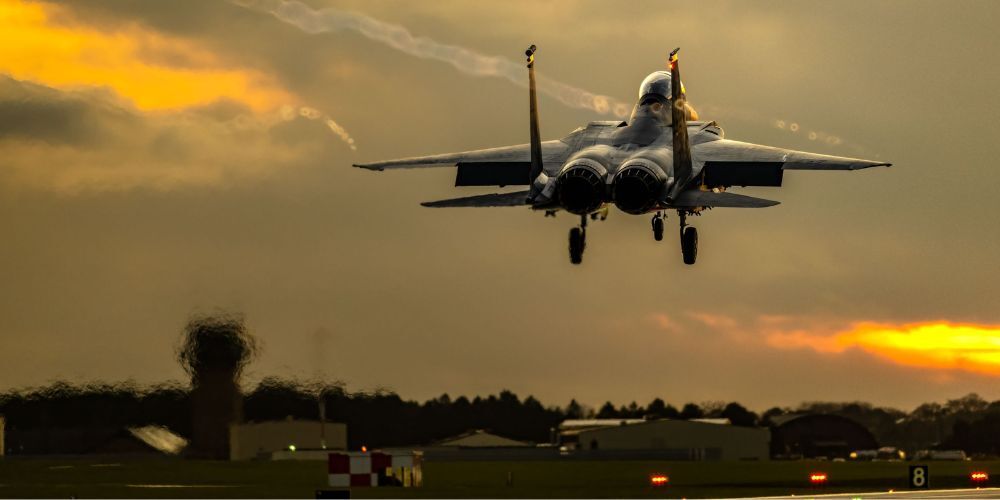RF (radio frequency) systems are the backbone of modern military and space technologies, supporting...
The Role of High Pass Filters in Advanced Military and Space Communications

There are 11,833 active satellites orbiting Earth as of this writing, each vying for limited bandwidth throughout the radio frequency (RF) spectrum. On the ground, power line noise, electrical machinery, and legacy communication systems add layers of low-frequency interference. Together, these factors create a crowded electromagnetic environment that challenges clear signal transmission.
To combat this widespread interference, high pass filters excel at blocking this unwanted low-frequency noise and preventing signal leakage into neighboring channels. Permitting only desired frequencies to propagate through a system, they play an indispensable role in high-data-rate communication links and sensitive electronic warfare (EW) platforms.
Let's examine high pass filter applications in satellite and defense communications, alongside the design challenges engineers encounter. We'll explore how they balance insertion loss, cutoff frequency, and SWaP trade-offs to build systems that are both high-performing and mission-ready.
What Does a High Pass Filter Do?
Every RF engineer knows that low-frequency interference is a constant battle. Whether from power line hum, atmospheric noise, or harmonic distortion, these unwanted signals swiftly degrade system performance.
A simple yet vital solution, high pass filters attenuate low-frequency content. This protects sensitive components and makes sure only the desired high-frequency signals get through. This function is particularly crucial in front-end designs, where low-frequency energy can easily overload or detune circuits.
High pass filters become even more indispensable in military and aerospace contexts, helping protect systems from electromagnetic pulses (EMPs) and deliberate low-frequency jamming. They also work to reduce harmonics that might cause unwanted behaviors or impair signal integrity.
High Pass Filter Use Cases in Military and Space
1. Satellite Communications (SATCOM)
Detecting weak uplink and downlink signals over extensive distances in SATCOM systems requires low-noise, high-gain RF front ends. These front ends are quite sensitive to low-frequency interference, particularly from terrestrial sources such as 50/60 Hz power grids, AM broadcast signals, and industrial apparatus.
To counter low-frequency interference from terrestrial sources, engineers deploy high pass filters at the receiver chain’s initial input. These filters use precise cutoffs to remove out-of-band energy below the system’s working frequency range. For example, when designing a high pass filter for a radar system operating at 1 GHz, where interference primarily exists below 10 MHz from power lines and machinery, the cutoff frequency can be set around 100 MHz to effectively block low-frequency noise while allowing the radar’s signals to pass clearly.
2. Electronic Warfare (EW)
Electronic warfare systems detect, identify, and respond to threats over a wide range of frequencies, often instantly. These systems function within dense electromagnetic environments where low-frequency interference can obscure or impede the detection of critical signals. Such interference might originate from natural sources or from intentional low-frequency jamming aimed at degrading system performance.
High pass filters suppress out-of-band low-frequency energy within the receiver path. This elimination of spectral clutter enhances the signal-to-noise ratio and enables the system to concentrate on higher frequency bands where threats are more probable. Consequently, detection speed and accuracy improve, supporting swifter, more dependable responses in EW operations. Electronic warfare systems such as the AN/ALQ-214 used on military aircraft, for instance, see improved detection speed and accuracy with these filters. This enables quicker, more reliable responses during threat detection and countermeasures.
3. Aircraft and Missile Systems
Aircraft and missile systems incorporate numerous onboard electronics and motors that produce low-frequency noise. During combat missions or in areas with high electromagnetic activity, this noise can interfere with radios and communication receivers, leading to missed signals, delayed commands, or disrupted coordination, risks all of which can compromise mission success and safety.
High pass filters purify the signal path by eliminating this internal low-frequency interference, allowing only higher-frequency signals to pass through. This helps radios and receivers operate reliably by reducing background noise. In missile guidance systems, filtering out low-frequency noise from motors and electronics supports precise tracking and control by preventing signal distortion. This noise reduction ensures the system maintains its trajectory and precision during flight.
High Pass Filter Trade-Offs and Design Considerations
For RF engineers to effectively design high pass filters for their particular applications, it's important to consider not just the use cases but also the design trade-offs involved. The table below outlines common challenges in high pass filter design, especially in military and space environments, and how engineers typically address them to achieve their desired performance.
| Trade-Off | Solution |
| Extreme temperature and mechanical stress due to harsh environments that can cause detuning, corrosion, or damage | Use thermally stable substrates, rugged aluminum housings with silver plating, and reinforced packaging to prevent detuning and damage. |
| Strong signal rejection that may result in increased insertion loss and reduced desired signal strength | Optimize the filter topology and order through simulation to balance stopband rejection with minimal insertion loss, choosing designs like Butterworth for low loss or Chebyshev for sharper roll-off, and use high-Q components to preserve desired signal strength. |
| Impedance mismatches causing signal reflections, reduced power delivery and distortion | Integrate impedance matching in filter design to minimize reflections and preserve signal strength. |
| Tight size, weight, and power (SWaP) limitations | Use compact microstrip and surface-mount technologies to embed filters on circuit boards, saving space and weight. |
| Temperature swings and harsh conditions | Apply accelerated thermal cycling during testing; select low-thermal-expansion materials and improve packaging to maintain stable response. |
At high frequencies, even minuscule variations in component dimensions or materials can profoundly impact filter performance. Minor manufacturing inconsistencies may cause shifts in insertion loss, return loss, and cutoff frequency, thus affecting overall system reliability.
To verify tight tolerances and repeatable results, precise manufacturing techniques are indispensable. Q Microwave, for example, utilizes advanced fabrication processes with strict quality oversight at every step. Our approach involves rigorous design and testing to guarantee each filter we manufacture consistently meets your desired performance.
Build Mil-Spec High Pass Filters for Your Project
So, what does a high pass filter do? High pass filters handle critical tasks behind the scenes for military and space systems, actively blocking low-frequency noise that can degrade system performance or compromise signal integrity. However, no matter how effective high pass filters are, developing them to meet tough size, weight, and power constraints while still functioning perfectly under severe conditions isn’t as straightforward as it seems.
Q Microwave excels in this arena. With over 25 years of specialization in RF and microwave filter design, we deliver standard and custom high pass filters built to perform even in the harshest military and space conditions. Our ISO-certified manufacturing process guarantees that each filter adheres to rigorous quality standards. You can also rest assured that every filter and subsystem we create follows strict military and space-grade quality requirements.
Ready to tackle your toughest RF challenges? Connect with Q Microwave to discuss your RFfilter requirements.



